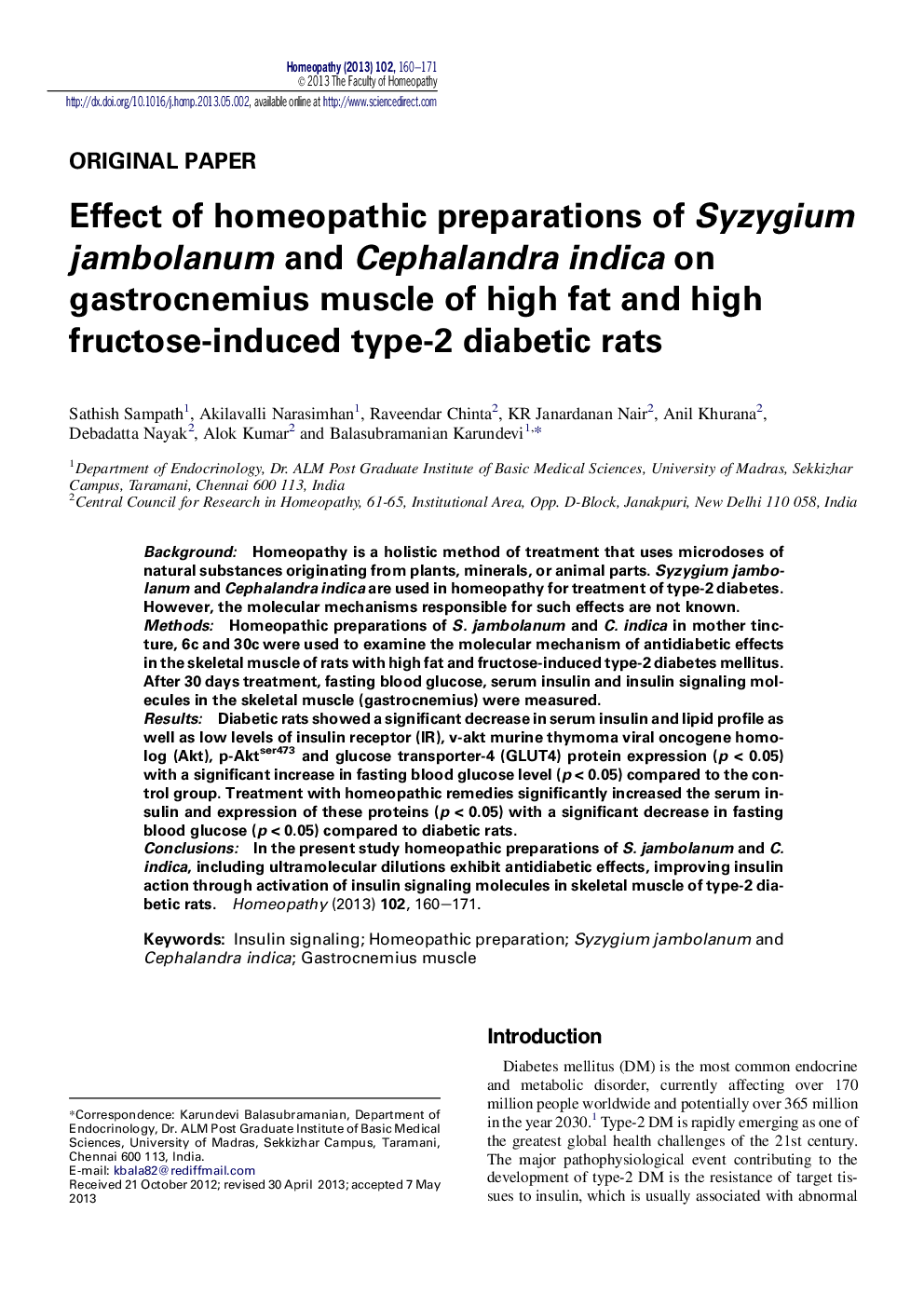| Article ID | Journal | Published Year | Pages | File Type |
|---|---|---|---|---|
| 2629938 | Homeopathy | 2013 | 12 Pages |
BackgroundHomeopathy is a holistic method of treatment that uses microdoses of natural substances originating from plants, minerals, or animal parts. Syzygium jambolanum and Cephalandra indica are used in homeopathy for treatment of type-2 diabetes. However, the molecular mechanisms responsible for such effects are not known.MethodsHomeopathic preparations of S. jambolanum and C. indica in mother tincture, 6c and 30c were used to examine the molecular mechanism of antidiabetic effects in the skeletal muscle of rats with high fat and fructose-induced type-2 diabetes mellitus. After 30 days treatment, fasting blood glucose, serum insulin and insulin signaling molecules in the skeletal muscle (gastrocnemius) were measured.ResultsDiabetic rats showed a significant decrease in serum insulin and lipid profile as well as low levels of insulin receptor (IR), v-akt murine thymoma viral oncogene homolog (Akt), p-Aktser473 and glucose transporter-4 (GLUT4) protein expression (p < 0.05) with a significant increase in fasting blood glucose level (p < 0.05) compared to the control group. Treatment with homeopathic remedies significantly increased the serum insulin and expression of these proteins (p < 0.05) with a significant decrease in fasting blood glucose (p < 0.05) compared to diabetic rats.ConclusionsIn the present study homeopathic preparations of S. jambolanum and C. indica, including ultramolecular dilutions exhibit antidiabetic effects, improving insulin action through activation of insulin signaling molecules in skeletal muscle of type-2 diabetic rats.
